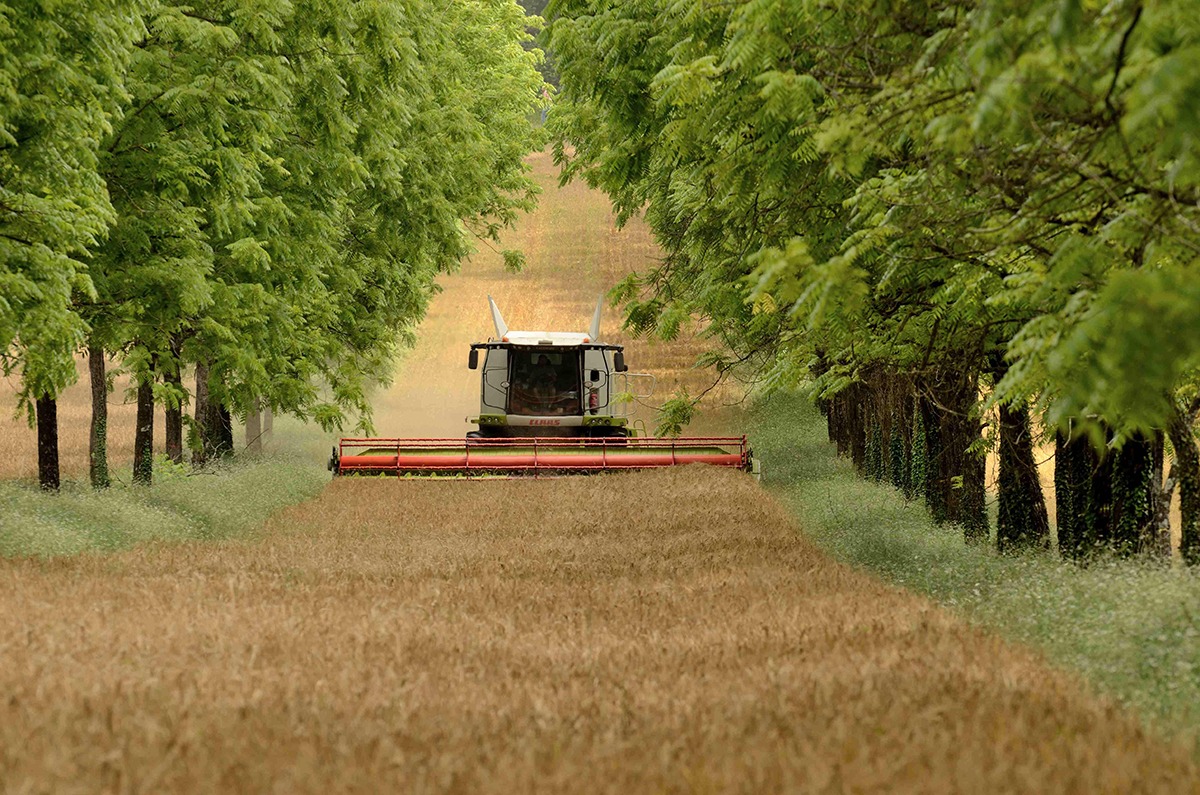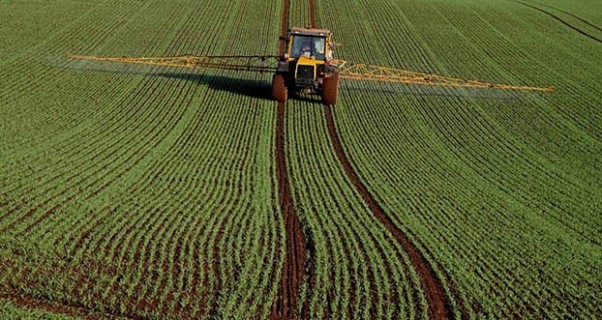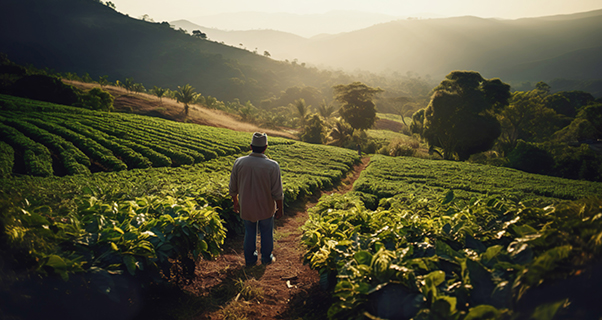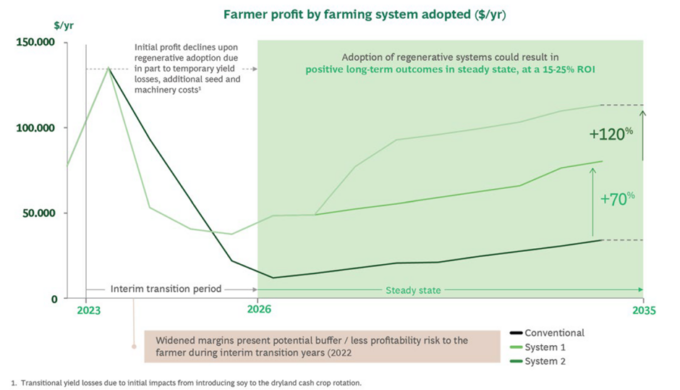
Digital sustainability: it pays to be a leader, not a laggard
Companies that excel in both digital and sustainable transformation attract a stock market premium, according to research. So, how do you tap into that value? ...

Published 16 August 2023 in Sustainability • 8 min read
Franck is a French winemaker in the Bordeaux region in the South of France. His family has been struggling over the last few years, despite managing the vineyards for four generations. Hail, temperature volatility, and floods have caused them to lose up to 80% of harvests.
His response to these increasingly difficult changes in climate was to start integrating regenerative agriculture practices to enhance the resiliency of his grapevines and protect his legacy.
A third of our climate impact – and a good proportion of human diseases – can be attributed to our agricultural system. I was curious to find out what regenerative agriculture is about and to examine the extent to which it represents a viable solution to the climate crisis.
With half of the world’s farmable land currently degraded, regenerative agriculture holds the potential to significantly cut the industry’s emissions, by improving soil health and consequently contributing to a more resilient food system, according to the World Economic Forum.
But what is regenerative agriculture? And is sustainability enough for farms to manage extreme weather fluctuations?
Conventional industrial agriculture was born after World War II in an attempt to compensate for labor shortages by maximizing yields through mechanical and chemical equipment. The rise of technological innovations at first generated impressive yields in production, which presented a promising solution to feed the fast-growing population after the war ended.
However, when too much carbon is pulled out of the ground and released into the atmosphere, it creates an imbalance. Little by little, heavy tilling disturbed and impoverished the topsoil, which gradually led to a massive loss of biodiversity. One of the biggest consequences is soil erosion, which leads to flooding and desertification. These dramatic changes can be seen in several countries around the globe, including Australia and the United States.
The resulting land degradation forced farmers to become increasingly dependent on synthetic products to fight diseases and pest attacks, which could no longer be naturally managed by a rich underground soil food web. Nowadays, it is estimated that a third of our total climate impact and the majority of human diseases come from our food and agricultural system.
The 2014 sci-fi movie Interstellar illustrated the results of this dramatic erosion of the environment and human health, referring to the 1930s American Dust Bowl, which was mainly caused by poor agricultural practices. In addition to land degradation, less biodiversity also means fewer vital microorganisms in our food, leading to less resilient human bodies.



Contrary to widespread beliefs, carbon in itself is not bad: in fact, all living things on Earth are carbon-based. What we are witnessing in today’s agricultural system is a disproportionate amount of carbon being pulled out of the ground, mainly through tillage and chemicals, which kills underground life. The problem originates in the absence of sufficient balancing elements, which are the plants and animals necessary to store CO2 back in the ground.
The following graph illustrates the dynamics of CO2 in the case of sterile versus fertile soil. A sterile soil devoid of enough microorganisms to store carbon will have extreme reactions to temperature changes, heavy rains, and storms – the concrete consequence of climate change that was fragilizing Franck’s vineyards. Balance is key.

Today, I am 24 years old, working with high-tech startups in Lausanne, Switzerland. Freshly out of university, it is an exciting time to go through as a young adult looking to determine where and how to make a positive and relevant impact. The word “sustainability” sounded interesting to me for many years, although its meaning confused me when it came to food.
Working with startups at Venture Lab on the EPFL campus, I have the chance to exchange with innovative startups daily. Entrepreneurs around the world are developing technologies to remove CO2 from the air and safely store it in the ground. The potential of such projects is incredibly promising and should be developed in parallel with natural ways to cut CO2 emissions.
Regenerative agriculture is defined by Australian farmer Charles Massy as “an ecological approach of farming that enables landscapes to renew themselves.” Simply put, it is a type of agriculture that mimics the many processes nature has put at our disposal. Farming according to regenerative principles encompasses several systems and methods from minimum tillage to cover crops, planned grazing, polycultures, agroecology/permaculture, and agroforestry.
These methods are estimated to be able to cut 5-15% of global CO2 emissions every year while at the same time rendering agriculture more resilient and improving the quality of the food we consume. As a comparison, the aviation industry emits about 2.5%. Regeneratively grown food products also show significantly better nutritional profiles, due to higher soil health scores.


Regenerative farming is gaining visibility and credibility in scientific research, demonstrating significant benefits for nutrient density, soil health, and profits estimated at up to 70% greater than for conventional farming. The largest food multinationals are massively investing in regenerative agriculture to reach CO2 neutrality by 2050.
In Switzerland, it is estimated that the number of farms implementing permaculture – a form of regenerative agriculture – increased from only three in 2000 to 250 in 2023. The following table sheds light on the global regenerative agriculture market and its main players, showing North America, Europe, and Asia Pacific as the leading industries.
Continued growth in global carbon emissions
Increased depletion of farmland
A new emphasis on soil health
Growing worldwide population
Need to reduce GHG pollution
Improvements in soil quality and water balances
Opportunities for market growth
General Mills raising awareness about regenerative agriculture through its products
PepsiCo converting 7m acres of its farms to regenerative agricultural technologies
Cargill planning to convert 10m acres to regenerative agriculture by 2030
Walmart pursuing regenerative agriculture on 50m acres
North America:
Europe and Asia Pacific:
Bluebird Grain Farms
Alter EcAmericas
Cargill
CIBO Technologies
Danone
Continuum Ag
EcoFarm
Soil Capital
Grounded South Africa
General Mills
Nestlé
RegenAG
New Life Tree Syrups
Regeneration Canada
White Oak Pastures
Global Regenerative Agriculture Market Research. Retrieved from Polaris Market Research
While industrial advancement seems to move in the right direction, important challenges remain before considering regenerative farming as a long-term and globally scalable solution:

Are you active in one of the following industries: financial services, input manufacturers and suppliers, processors and suppliers, manufacturers and retailers, farm advisors, landowners? Or are you involved in Government decisions? If yes, I would recommend having a look at the detailed Action Plan developed by the Sustainable Markets Initiatives to explore concrete steps your established company, startup, or organization can take to accelerate the transition to regenerative agriculture. Here is a short overview of some of the actions mentioned:
The more I read and the more I discuss with farmers, the more questions I have. Very few people understand the basic mechanisms of how the soil works, and even fewer have heard of regenerative agriculture. This astounds me, considering the direct impact agriculture has on our health. But the word is getting out. Contact with nature is being increasingly brought to schools, with children even having scheduled class time in the middle of the forest in some parts of Switzerland.
While land and livestock management currently drives a quarter of global CO2 emissions and contributes to massive soil erosion, it could also be part of the solution toward a healthier and more resilient agricultural system.

17 July 2024 • by Michael R. Wade, Evangelos Syrigos in Sustainability
Companies that excel in both digital and sustainable transformation attract a stock market premium, according to research. So, how do you tap into that value? ...

11 July 2024 • by Stéphane J. G. Girod in Sustainability
A series of watershed events forced CHANEL out of its comfort zone, culminating in the launch of CHANEL Mission 1.5°. With this new strategy, the luxury fashion house embarked on a journey...

5 July 2024 • by Avni Shah in Sustainability
Creative industries have a key role to play in creating positive social change. Here are six key insights to help them achieve their goals. ...

3 July 2024 • by Richard Baldwin, Salvatore Cantale in Sustainability
The EU Corporate Sustainability Reporting Directive (CSRD) will impose comprehensive and standardized sustainability reporting responsibilities on firms, adding unprecedented complexity to mergers and acquisitions. ...
Explore first person business intelligence from top minds curated for a global executive audience